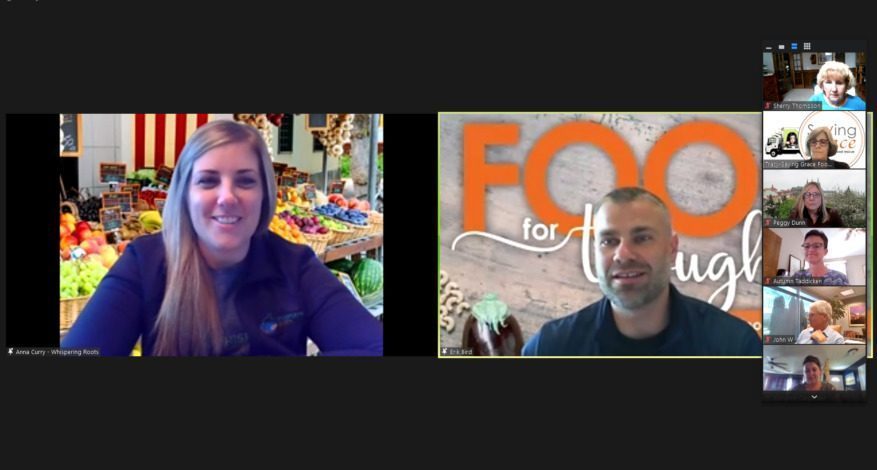What Do Food Date Labels Really Mean?
Do food label terms such as “best by,” “sell by,” “best if used by” and “use by” confuse you? If so, you’re not alone. “Most people really don’t know what those dates mean,” says Anna Curry, registered dietitian and director of culinary and nutrition programming at Whispering Roots. “There’s a lot of misinformation.”
This confusion can lead to food that is still good being discarded. Curry, who was the guest speaker for a recent Saving Grace Food for Thought presentation, said a study found 84% of consumers discarded food near the package date, at least some of the time.
“Food date labels are just an estimate,” Curry said. No federal laws regulate the dates.
Dates, Curry said, are manufacturers’ best guesses as to peak quality for products. “It doesn’t mean as soon as it hits that date it’s bad.” The one exception is baby formula, which she said shouldn’t be purchased after the package date.
Curry provided insight into what these terms mean and how long past the date foods are still good to eat. “Sell by” dates are primarily used for shelf-stable items; they help stores rotate their products and sell the oldest ones first. Canned goods may be safe to eat years past the date on the products. Items like cereal, chips and pasta are good months past the date.
“Best if used by” and “use by” dates indicate when a product is at its best quality. Milk and meat, for instance, may be good a few days past this date. Eggs, though, are good three to five weeks past the date, while cheese is good two to four weeks past the date. All these items can be frozen, Curry said, which prolongs their life. She recommends freezing foods in portion sizes for easy use later.
Senses rather than dates are a more accurate indicator of whether foods are bad. Using the smell test, “you can tell right away if your milk is spoiled,” she said.
How foods are stored impacts longevity. Curry offered a few tips:
- Milk – Keep it at the back of the refrigerator, the coldest part.
- Celery – Take it out of its plastic sleeve and wrap tightly in aluminum foil or a damp cloth towel.
- Asparagus – Store upright in a glass of water in the refrigerator.
- Berries – Move to a more spacious container lined with paper towels. Keep dry until ready to eat.
- Lettuce – Wash and store in a salad spinner in the refrigerator.
- Tomatoes and avocadoes – Store on the counter with plenty of air circulation. Once they are very ripe, move them to the refrigerator.
For more tips on how long food lasts and how to waste less food, watch the video of Curry’s presentation online at https://youtu.be/-t-T5ysz9S0.


